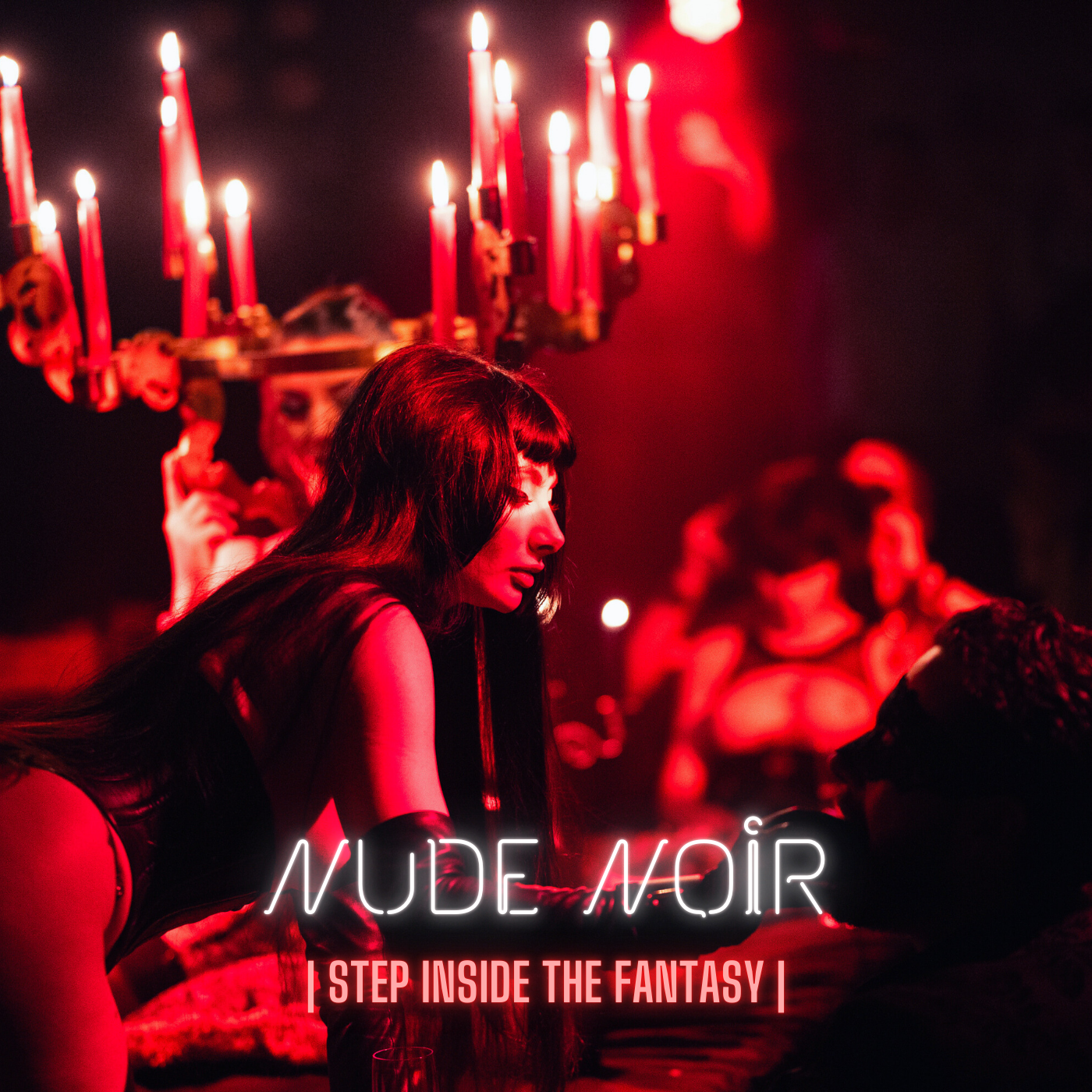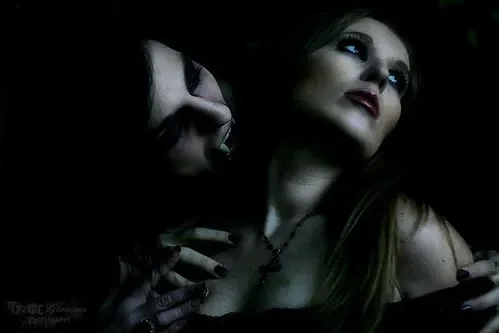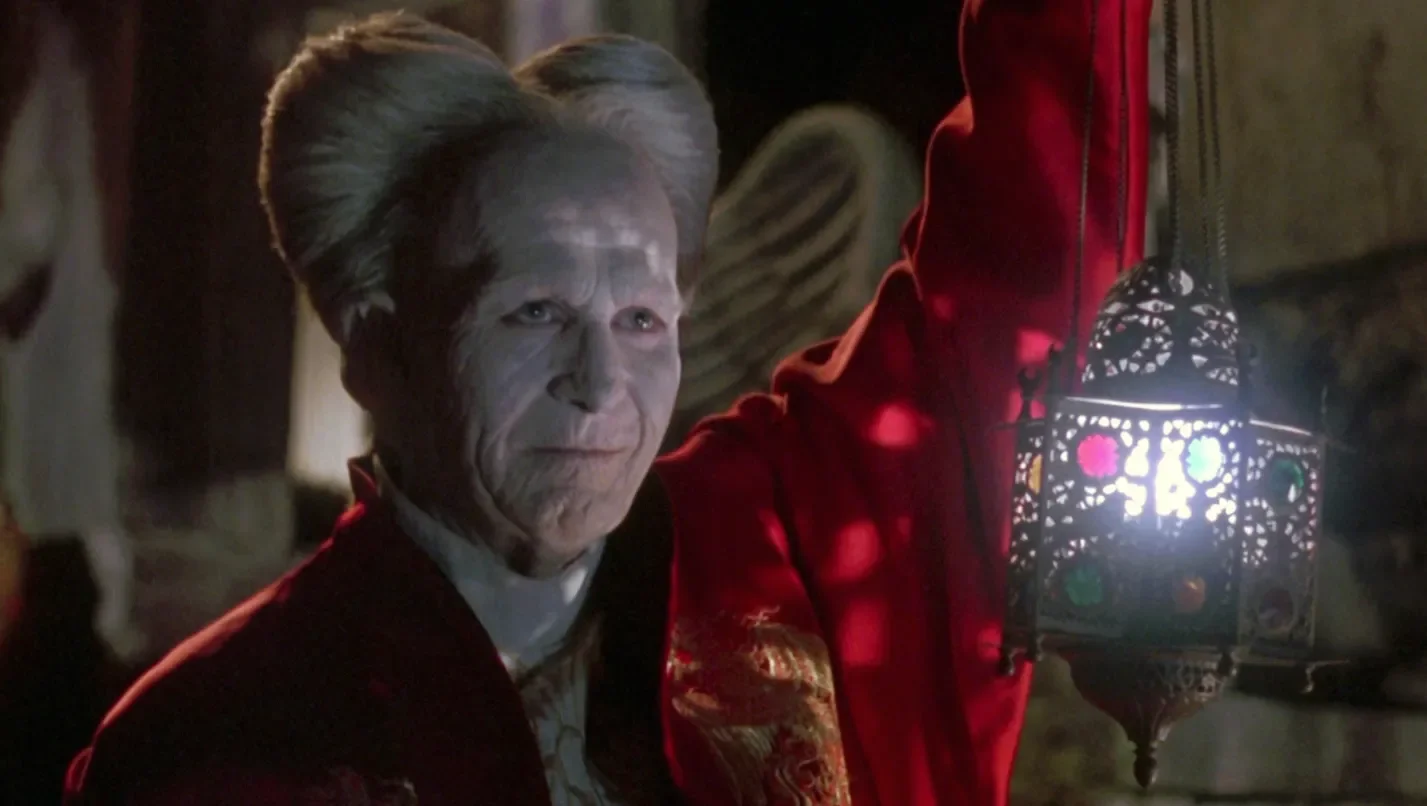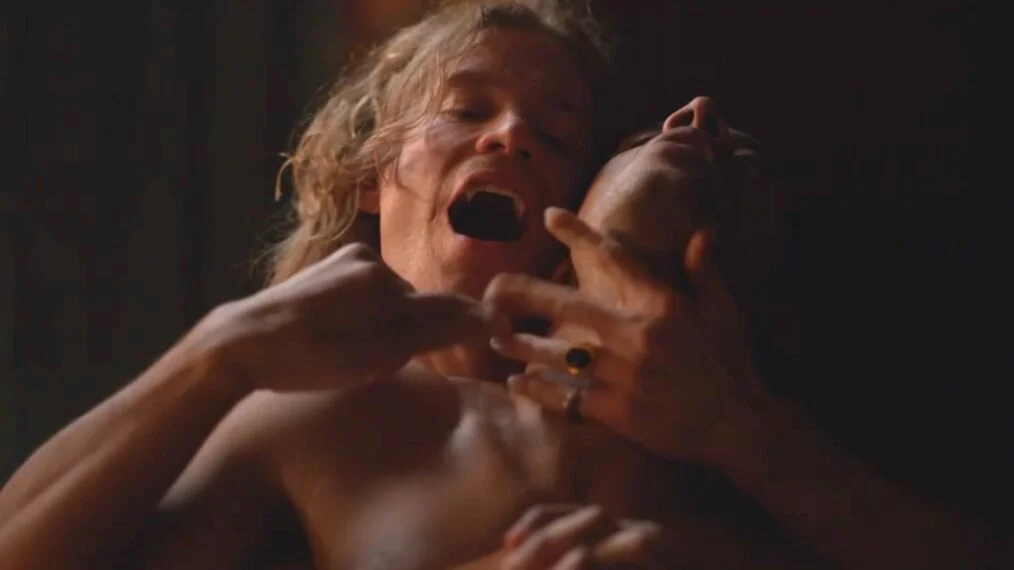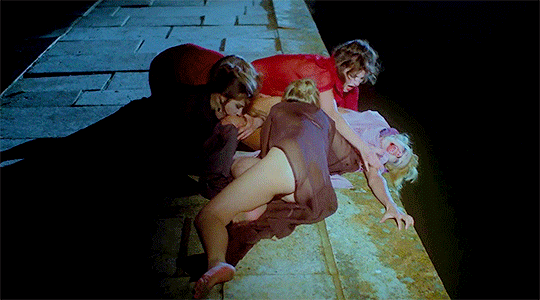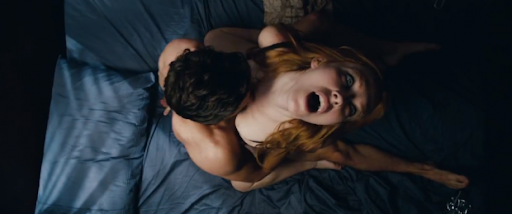Blood, Desire, and the Undead: Why We Find Vampires So Irresistibly Sexy
On Oct 16th, we’ll be headed to Nude Noir’s Vampiric performance at the legendary Paradise Club in NYC. Join us next Thursday and use code NSFW at checkout for $30 off your passes.
In anticipation for the event, we breakdown why we find vampires so fucking sexy.
The Erotic Pulse of the Undead
From the first time a vampire bared its fangs on screen, audiences have felt something deeper than fear — something like fascination. Vampires occupy a space where danger and desire meet, a threshold between death and orgasm. They don’t just kill; they seduce. They don’t simply bite; they penetrate. To be chosen by a vampire is to be seen, wanted, and devoured, an act that merges terror with ecstasy.
This erotic charge has always defined the vampire myth. Beneath the surface of blood and immortality lies a meditation on forbidden pleasure. Every vampire story is about crossing a line: between life and death, morality and impulse, purity and corruption. The vampire doesn’t just threaten the body; they awaken it. They are the dark reflection of our own hidden appetites.
The Gothic Origins of Desire
The erotic vampire was born in literature long before cinema discovered its allure. John Polidori’s The Vampyre (1819) gave the world Lord Ruthven, an aristocrat as charming as he was predatory. He moved through high society like a shadow in silk, marking the beginning of the vampire as both social climber and sexual deviant.
But it was Sheridan Le Fanu’s Carmilla (1872) that turned vampirism into a metaphor for queer desire. Carmilla’s attraction to her female victims was tender, possessive, and deeply sensual, a radical portrayal of same-sex love in an era obsessed with repression. In Carmilla’s gaze, female intimacy became something dangerous, intoxicating, and unspeakably beautiful.
Then came Bram Stoker’s Dracula (1897), the book that would define the genre. While Stoker’s Victorian readers saw Dracula as a monster invading their moral order, modern audiences can’t help but notice the erotic tension pulsing beneath the prose. The Count’s nocturnal visitations are drenched in sexual imagery: lips on necks, bodies limp in surrender, the violation of sanctity by something irresistibly foreign. It’s no coincidence that Dracula’s victims are often depicted as women whose “purity” is consumed, his bite, a release from repressive virtue.
The Cinematic Vampire: From Monster to Icon
Cinema took that hidden eroticism and made it flesh. Bela Lugosi’s Dracula (1931) transformed the vampire into a figure of hypnotic allure, aristocratic, composed, and inexplicably magnetic. The film’s shadowy lighting and slow pacing heightened the sense of intimacy, turning each bite into a forbidden kiss.
Christopher Lee’s Hammer Horror interpretations in the 1950s and 60s made the vampire bloodier and more carnal. The subtext of sexuality became text, with plunging necklines, crimson lips, and the gothic theater of seduction. The vampire had become the cinematic embodiment of taboo lust.
By the 1980s, the vampire was a rock star. The Hunger (1983), starring Catherine Deneuve and David Bowie, portrayed vampirism as an eternal ménage à trois — elegant, queer, and soaked in erotic melancholy. The Lost Boys (1987) and Near Dark (1987) gave us leather jackets, eyeliner, and a generation of immortal misfits whose nocturnal lifestyle looked more like liberation than damnation.
And then came Anne Rice’s world, crystallized in Interview with the Vampire (1994). Rice’s vampires, brought to life by Tom Cruise and Brad Pitt, were beautiful, tortured, and unmistakably queer. Their relationships were coded love stories, bonds of intimacy and codependence that transcended gender, age, and time. The film didn’t just hint at queerness; it embraced it, showing the vampire’s bite as both an act of violence and a form of communion.
The Queer Heart of the Vampire
Vampires have always been outsiders, immortal beings who live in the shadows, hiding their true nature, passing among the living while craving connection. That dynamic has always resonated deeply with queer audiences. To be a vampire is to be both powerful and marginalized, to navigate a world that fears what you are.
The parallels are unmistakable: secrecy, transformation, chosen families, the allure of nightclubs and safe spaces, the beauty of otherness. For queer people, the vampire myth often feels autobiographical, a coded language of survival and seduction. The bite becomes a metaphor for coming out, for awakening to desire, for embracing a form of love that society once condemned.
Le Fanu’s Carmilla and Rice’s Vampire Chronicles opened the door, but modern interpretations have thrown it wide. In True Blood (2008–2014), vampires “come out of the coffin,” a deliberate echo of LGBTQ+ visibility politics. The show’s vampires demand equal rights and face moral panic, mirroring real-world struggles. Meanwhile, What We Do in the Shadows takes queerness as a given, its characters fluid, polyamorous, and joyously unapologetic.
Even Let the Right One In (2008) and its American remake reveal the tenderness in monstrosity: a gender-ambiguous vampire child whose love transcends body, gender, and time. These stories don’t just suggest queerness; they normalize it, transforming the vampire from a symbol of taboo into a celebration of multiplicity.
Desire Beyond Death
What makes vampires so eternally sexy is the way they collapse boundaries, between genders, between pleasure and pain, between life and death. They invite us to imagine love that never decays, desire that defies the human clock.
Their seduction lies in their control. They move through eternity with perfect poise, their hunger both dangerous and divine. To love a vampire is to surrender, to abandon safety for the ecstasy of being seen completely. It’s an erotic power exchange that transcends traditional gender roles: the vampire dominates and consumes, yet their hunger makes them vulnerable. They need their prey as much as their prey desires them.
And that’s where the true eroticism lies, in reciprocity. In the dance of predator and willing victim, giver and taker, the vampire myth becomes an eternal loop of seduction and surrender. It’s the fantasy of being desired completely, of being consumed and transformed by love.
Immortality, Beauty, and the Fantasy of Control
Vampires represent the ultimate escape from mortality. Their eternal youth and beauty feed our narcissistic fantasies, the dream of a body untouched by time, a life lived in perpetual night, free from decay. But beneath that fantasy is another truth: immortality is lonely.
That loneliness, too, is seductive. The tragic vampire, from Rice’s Lestat to Jarmusch’s Only Lovers Left Alive (2013), evokes a kind of poetic solitude that feels romantic. They are weary philosophers of desire, watching the centuries pass, feeding off fleeting human vitality. Loving them means becoming part of that tragedy, merging beauty and despair in one eternal embrace.
Why We Still Crave the Bite
Our obsession with vampires endures because they embody the erotic contradictions we live with: we want to be devoured, but we also want to be in control; we long for love that transcends the body, but we’re trapped in flesh.
The vampire lets us have both the thrill of surrender and the illusion of power. They are the fantasy that we can taste danger without dying, that desire can outlive the morning. And in their darkness, we glimpse our own: beautiful, terrible, and utterly human.

